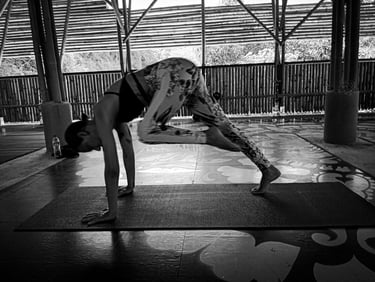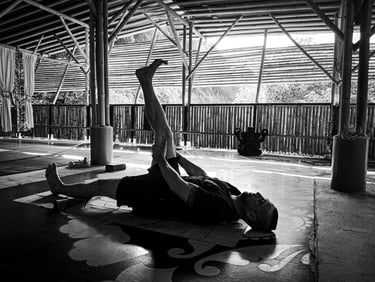Strengthening Our Pelvic Floor
Our pelvic floor muscles help to stabilise our our lower back, hips and stomach while helping with important bodily functions, like expelling waste. They can weaken over time due to injury or ageing, leading to conditions like incontinence or pelvic organ prolapse.
Exercising the relevant muscles can minimise the effects of having weak pelvic floor muscles.


Where are they?
The pelvis is a bony structure located at the base of our spine. It's made up of the two hip bones and a triangular-shaped bone in between called the sacrum. The pelvis also includes the pelvic floor muscles, which as the name implies, are situated at the bottom or floor of the pelvis. They stretch from our pubic bone at the front to the tailbone at the back.
What they do
They support our bladder, bowels and uterus, in women, helping us control when we empty our bladder or bowels. They also play a role in sexual function and can even influence our posture and core strength.
Unfortunately, pelvic floor problems are quite common. Issues like incontinence, pelvic pain and prolapse (when one or more of the pelvic organs drop from their normal position) can arise when these muscles aren't functioning properly. Pregnancy, ageing, chronic coughing, obesity, heavy lifting or excessive straining on the toilet can also contribute to these problems.


Early Action
Many of us don't think about our pelvic floor until something goes wrong - usually when we begin to lose the ability to control release of waste or wind. Strengthening and caring for our pelvic floor can help prevent problems later in life.
Many yoga practices activate the pelvic floor, improving mobility to the muscles in and around the pelvic floor, increasing strength and coordination. Whether we aim to prevent or reduce problems caused by a weak pelvic floor, yoga might be the ideal way forward.
Updated - Dec 2024
Research highlights that neglecting foundational core muscles, including the pelvic floor, can increase the risk of dysfunction, such as urinary incontinence or prolapse, particularly for athletes or those new to intensive workouts.
A recent study published in the Journal of Women's Health Physical Therapy (2023) emphasised the need for tailored exercises to build pelvic floor strength before progressing to advanced fitness regimes. Incorporating yoga, which naturally integrates pelvic floor activation, can be a good way to address this. Poses like Downward Dog (Adho Mukha Svanasana) help lengthen and gently activate pelvic floor muscles, while restorative poses like Legs Up the Wall (Viparita Karani) can release tension and promote circulation to the area, supporting overall pelvic health.
Strong foundational muscles not only aid in core stability and posture but also pave the way for safer, more effective movement in all forms of exercise.
Further Reading
Pelvic Strengthening : Downward Dog
Pelvic Strengthening : Squats
Hip Mobility : A Gentle Sequence
More Insights
